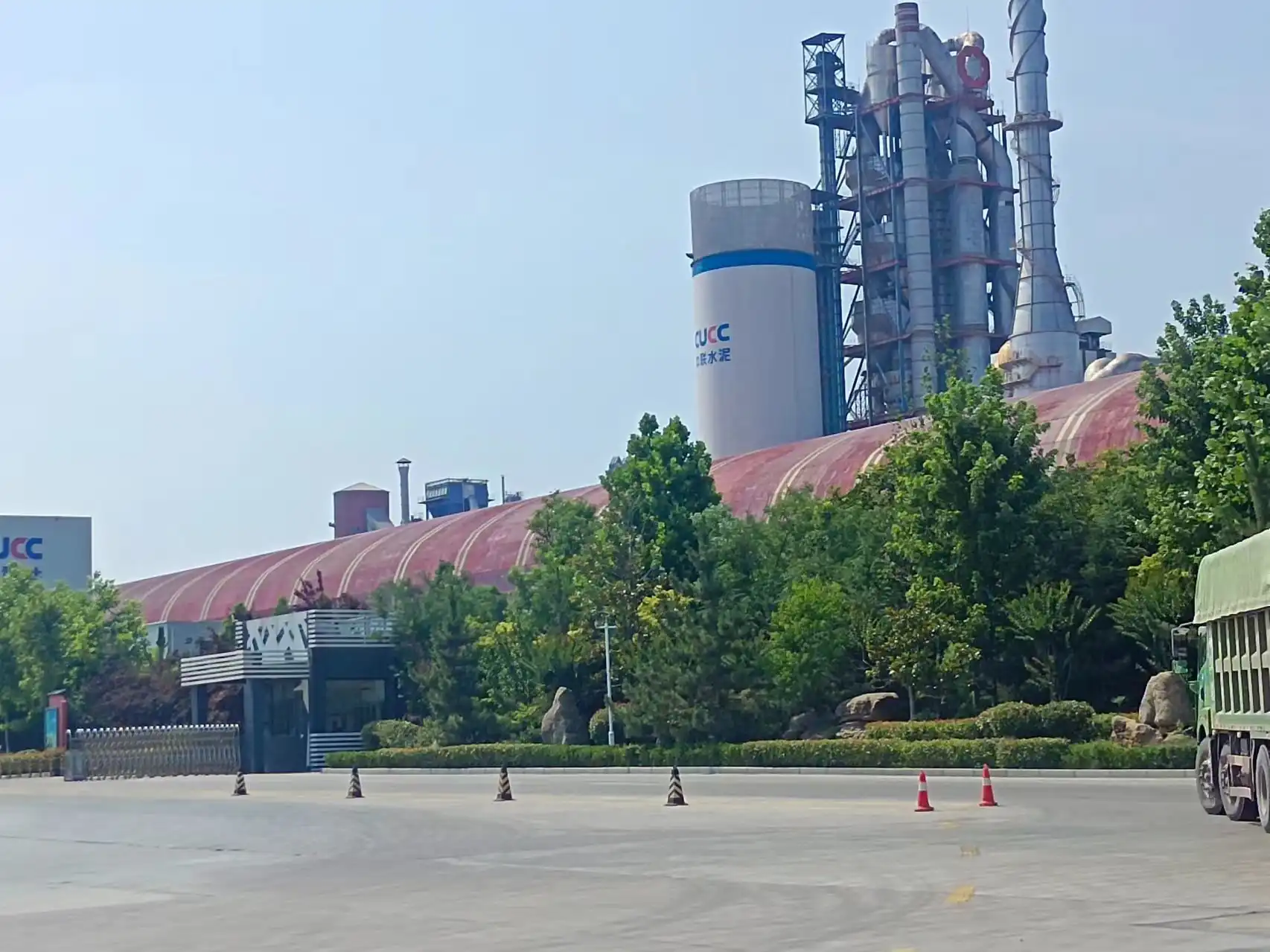In the world of cement production, efficiency and quality are paramount. One of the key components that significantly impact these factors is the use of grinding media balls. These small but mighty spheres play a crucial role in the cement manufacturing process, helping to crush and grind raw materials into fine particles. In this comprehensive guide, we'll explore everything you need to know about cement grinding media balls, from the materials used to their benefits and how to choose the right ones for your cement plant.

Top Materials Used in Grinding Media Balls
The effectiveness of grinding media balls largely depends on the materials used in their construction. Let's delve into the most common and efficient materials utilized in the production of these essential components:
1. Steel Balls
Steel balls are the workhorses of the cement industry. They're widely used due to their durability, cost-effectiveness, and versatility. These balls are typically made from high-carbon or forged steel, offering excellent wear resistance and impact strength. Steel balls come in various sizes, ranging from 20mm to 150mm in diameter, allowing for customization based on specific grinding requirements.
2. High-Chromium Steel Balls
For applications that demand even greater durability and wear resistance, high-chromium steel balls are the go-to choice. These balls contain a higher percentage of chromium, usually between 10% and 30%, which enhances their hardness and ability to withstand abrasive environments. High-chromium steel balls are particularly useful in cement plants that process harder raw materials or require longer grinding cycles.
3. Cast Iron Balls
Cast iron balls offer a balance between cost and performance. While not as durable as their steel counterparts, they're more affordable and still provide adequate grinding capabilities for many cement production processes. Cast iron balls are often used in the initial stages of grinding or in applications where the raw materials are less abrasive.
4. Ceramic Balls
Ceramic balls, typically made from materials like alumina or zirconia, are gaining popularity in the cement industry. These balls offer superior wear resistance and can maintain their spherical shape for longer periods compared to metal balls. Ceramic balls are ideal for fine grinding applications and can help reduce contamination in the final product. However, they come at a higher initial cost, which is often offset by their longer lifespan and improved grinding efficiency.
5. Forged Steel Balls
Forged steel balls are manufactured through a process that aligns the metal's grain structure, resulting in enhanced strength and durability. These balls are particularly suitable for high-impact grinding operations and can withstand extreme pressures without deforming. Forged steel balls often outlast cast steel balls, making them a cost-effective choice for cement plants looking to optimize their grinding operations.
How Grinding Media Balls Improve Cement Production
The use of cement grinding media balls in cement production offers numerous benefits that contribute to improved efficiency, quality, and cost-effectiveness. Let's examine how these small spheres make a big difference:
Enhanced Grinding Efficiency
Grinding media balls significantly increase the efficiency of the cement grinding process. As the mill rotates, these balls create a cascading effect, repeatedly impacting and crushing the raw materials. This action reduces particle size more quickly and uniformly than other grinding methods, leading to faster production times and more consistent output.
Improved Product Quality
The use of appropriate grinding media balls ensures that cement particles are ground to the desired fineness. This level of control over particle size is crucial for producing high-quality cement with the right properties for various construction applications. Finer, more uniform particles contribute to better cement strength, setting time, and overall performance.
Energy Savings
While it might seem counterintuitive, using the right cement grinding media balls can actually lead to significant energy savings. By optimizing the ball size, material, and charge level, cement plants can reduce the power required to operate their mills. This not only lowers operational costs but also contributes to a more sustainable production process.
Reduced Wear and Tear on Equipment
High-quality grinding media balls can help extend the life of milling equipment. By efficiently grinding materials, they reduce the strain on mill liners and other components. This leads to less frequent maintenance, fewer replacements, and ultimately, lower operational costs for cement plants.
Increased Production Capacity
The improved grinding efficiency offered by well-chosen grinding media balls often translates to increased production capacity. Cement plants can process more raw materials in less time, allowing them to meet growing demand without significant capital investments in additional equipment.
Flexibility in Raw Material Processing
Different types of grinding media balls can be used to accommodate various raw materials. This flexibility allows cement plants to adapt their grinding process to handle harder or softer materials without compromising efficiency or product quality.
Contamination Control
Using high-quality grinding media balls, particularly ceramic or high-chromium steel balls, can help reduce contamination in the final cement product. These materials resist wear and maintain their integrity better than lower-quality alternatives, ensuring that fewer impurities are introduced during the grinding process.
Choosing the Right Grinding Media for Your Cement Plant
Selecting the appropriate cement grinding media balls for your cement plant is a critical decision that can significantly impact your operation's efficiency and product quality. Here are key factors to consider when making your choice:
Assess Your Raw Materials
The hardness and abrasiveness of your raw materials play a crucial role in determining the most suitable grinding media. For harder materials like clinker, high-chromium steel or ceramic balls might be more appropriate due to their superior wear resistance. Softer materials may allow for the use of standard steel or cast iron balls.
Consider Your Grinding Mill Specifications
The type and size of your grinding mill will influence your choice of grinding media. Factors such as mill diameter, rotational speed, and internal configuration should be taken into account. Consult with your mill manufacturer or a grinding media expert to ensure compatibility and optimal performance.
Evaluate Your Production Goals
Your cement production targets and quality requirements will impact your grinding media selection. If you're aiming for higher production volumes, you might opt for larger, heavier balls that can handle increased loads. For finer grinding and higher-quality cement, smaller balls or a combination of ball sizes might be more appropriate.
Analyze Cost vs. Performance
While it's tempting to choose the least expensive option, it's essential to consider the long-term cost-effectiveness of your grinding media. Higher-quality balls may have a higher upfront cost but can offer better wear resistance and longer lifespans, ultimately providing better value. Conduct a thorough cost-benefit analysis that includes factors like replacement frequency, energy consumption, and impact on product quality.
Test Different Options
If possible, conduct trials with different types of grinding media to determine which performs best in your specific operating conditions. Many suppliers offer sample quantities for testing purposes. Monitor key performance indicators such as grinding efficiency, energy consumption, and wear rates during these trials.
Consider Environmental Impact
As sustainability becomes increasingly important in the cement industry, consider the environmental impact of your grinding media choice. Some materials, like certain ceramic balls, may offer longer lifespans and reduced waste. Additionally, more efficient grinding can lead to lower energy consumption and reduced CO2 emissions.
Seek Expert Advice
Don't hesitate to consult with grinding media specialists or experienced cement industry professionals. They can provide valuable insights based on your specific needs and help you navigate the complexities of choosing the right grinding media for your plant.
Plan for Ongoing Optimization
Remember that choosing grinding media is not a one-time decision. As your production needs change or new technologies emerge, be prepared to reassess and optimize your grinding media selection. Regular monitoring and willingness to adapt can lead to continuous improvements in your cement production process.
In conclusion, cement grinding media balls are a critical component in the cement production process, offering numerous benefits from improved efficiency to better product quality. By understanding the various materials available and carefully considering your plant's specific needs, you can select the optimal grinding media to enhance your cement production operations.
At NINGHU, we specialize in manufacturing high-quality grinding media balls tailored to the unique requirements of cement plants worldwide. With over thirty years of experience in wear-resistant materials production, we offer a wide range of options to meet your specific needs. Our team of experts is ready to assist you in choosing the perfect grinding media solution for your cement plant.
Ready to optimize your cement grinding process? Contact us today at sales@da-yang.com or sunny@da-yang.com to discuss your grinding media needs and discover how our products can enhance your cement production efficiency and quality.
References
- Smith, J. (2022). Advancements in Cement Grinding Technology. Journal of Cement Engineering, 45(3), 112-125.
- Johnson, A. & Brown, L. (2021). Comparative Analysis of Grinding Media Materials in Cement Production. International Cement Review, 18(2), 78-92.
- Zhang, X. et al. (2023). Energy Efficiency Improvements in Cement Grinding: A Review. Sustainable Cement Production, 7(1), 23-41.
- Williams, R. (2020). Optimizing Grinding Media Selection for Modern Cement Plants. Cement Industry Technical Conference, 156-170.
- Garcia, M. & Lee, S. (2022). The Impact of Grinding Media on Cement Quality and Performance. Cement and Concrete Research, 52(4), 301-315.
- Thompson, K. (2021). Sustainability Considerations in Cement Grinding Media Selection. Green Cement Manufacturing, 9(3), 189-204.








